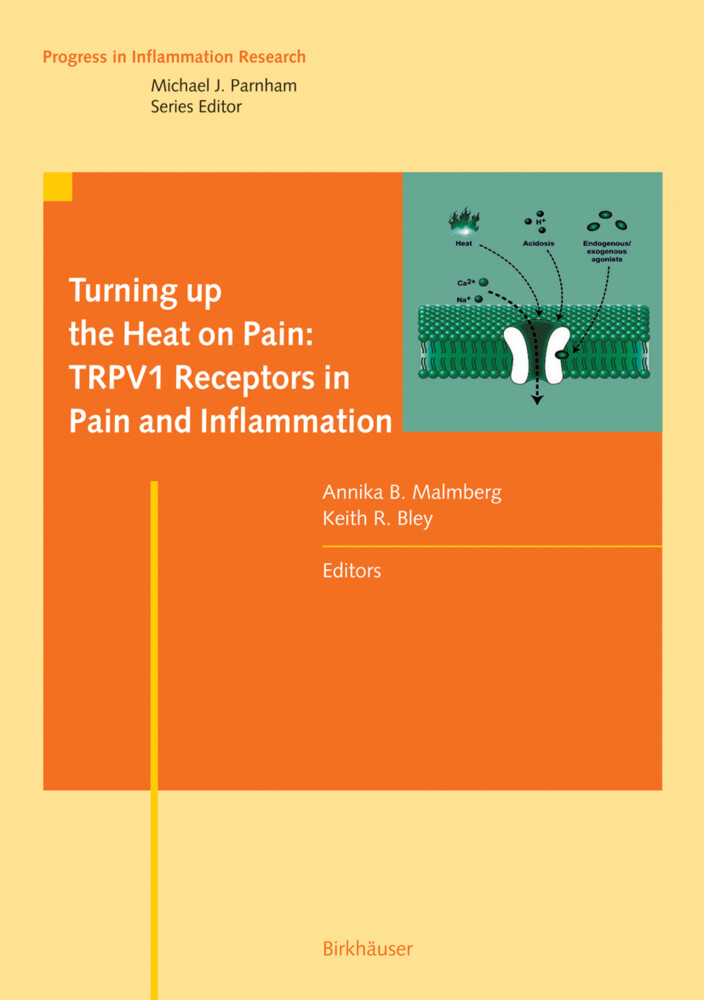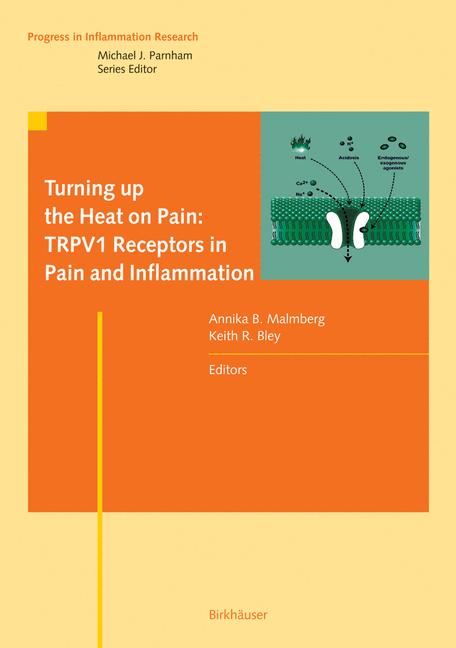
Zustellung: Mi, 16.07. - Sa, 19.07.
Versand in 7 Tagen
VersandkostenfreiDespite tremendous advances in the understanding of the sensory nervous system which have accompanied the recent explosive growth of the neurosciences, rema- ably few innovative medicines directed towards pain and inflammation are ava- able. Indeed, many patients are still prescribed analgesic and anti-inflammatory medications that were identified long ago as components of herbal remedies. Si- larly, potential new medicines in clinical evaluation based on capsaicin and the c- saicin receptor are both grounded firmly on folk traditions and yet rely upon the most contemporary techniques of drug discovery and delivery. The first formal report of the pain-relieving properties of capsaicin appeared in 1850 [1]. However, for centuries before this, capsaicin-containing extracts had been used as folk medicines in cultures with access to pepper plants, much in the same way as poppy or willow-bark extracts were. Despite widespread use, it was not until 1878 that the selective action of capsaicin on the sensory nervous system was r- ognized [2]. In Chapter 1 of this volume, Janos Szolcsányi reviews this early research, which culminated with the seminal studies of Nicholas Jansco and his c- leagues in Hungary in the 1940s. Since then, capsaicin and related vanilloid c- pounds have played a prominent role in analgesia and inflammation investigations because of their ability to selectively activate a subpopulation of sensory neurons and produce sensations of pain and localized erythema.
Inhaltsverzeichnis
Historical perspective on capsaicin and its receptor. - Hot peppers, pain and analgesics. - Molecular and cellular properties of vanilloid receptors. - Structural determinants of TRPV1 functionality. - TRPV1 distribution and regulation. - Pharmacology and physiology of vanilloid receptors. - Insights into TRPV1 pharmacology provided by non-capsaicin ligands. - Endocannabinoids and vanilloid TRPV1 receptors. - Vanilloid receptor-mediated hyperalgesia and desensitization. - Capsaicin in human experimental pain models of skin, muscle and visceral sensitization. - Vanilloid receptor involvement in disease states. - TRPV1 in gut function, abdominal pain and functional bowel disorders. - TRPV1 in the airways. - Therapeutic potential of vanilloid agonists and antagonists. - TRPV1 agonist-based therapies: mechanism of action and clinical prospects. - TRPV1 agonist therapies in bladder diseases. - TRPV1 antagonists and chronic pain.
Produktdetails
Erscheinungsdatum
15. August 2005
Sprache
englisch
Auflage
2005
Seitenanzahl
268
Reihe
Progress in Inflammation Research
Herausgegeben von
Annika B. Malmberg, Keith R. Bley
Verlag/Hersteller
Produktart
gebunden
Abbildungen
XII, 249 p.
Gewicht
607 g
Größe (L/B/H)
241/170/20 mm
ISBN
9783764370800
Entdecken Sie mehr
Bewertungen
0 Bewertungen
Es wurden noch keine Bewertungen abgegeben. Schreiben Sie die erste Bewertung zu "Turning up the Heat on Pain: TRPV1 Receptors in Pain and Inflammation" und helfen Sie damit anderen bei der Kaufentscheidung.








